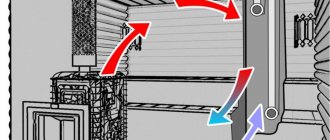Among bathhouse lovers there are those who visit the steam room at least once a week. Is it necessary to interrupt the tradition if a fresh tattoo appears on the body? Can steam speed up healing and destroy all potentially dangerous microbes, and make colors bright and rich? Don't believe old myths. Read the article and take into account the advice of experienced artists from the Art Of Pain studio.
A little history
Tattoos appeared in Russia much later than in Europe. At the beginning of the twentieth century, Russian sailors became acquainted with the art of tattooing, adopting the fashion from foreign sailors.
Tattoos entered the everyday life of Russian people en masse with the advent of crime. Tattoos have become part of recognition in prisons and places of detention.
During the Soviet era, tattoos were common in the army, navy, and criminal structures. Often expressed a person’s attitude to politics, the meaning of life, and to people of the opposite sex.
Some religious denominations prohibit tattoos. Islam, Judaism and even Christianity are against drawings and patterns on the body; Muslims consider tattoos to be a sin.
And I’ll tell you about Japanese tattoos from the Yakuza a little later.
Prevention
To avoid severe skin inflammation after getting a tattoo, you need to remember the following rules:
- Compliance with the recommendations given by the salon master.
- Daily treatment of damaged skin with wound healing cream.
- Be careful with the tattoo area. Inflamed skin should not be scratched or rubbed.
- Keeping an unhealed tattoo clean and protecting it from the sun.
It is also important to eat right so that your body gets all the vitamins and minerals it needs. This will have a positive effect on the regeneration process
What is a tattoo
A tattoo is a permanent design, a pattern on the body, which is made by applying paint under the skin. Coloring pigments are driven into the dermis with a needle, the process is painful, it injures the skin, the tattooed area takes a long time to heal.
The healing process of a tattoo depends on the individual characteristics of the human body, the location of the design, its size, style and color scheme. That is, a small, monochromatic pattern heals much faster than a large pattern.
On average, a tattoo heals in about a week, and complete restoration of the skin occurs in a month.
Is it possible to go to the bathhouse or sauna immediately after getting a tattoo?
Stages of healing
Salon masters usually describe the tattoo healing process to clients as follows:
- First day. The skin is swollen and inflamed. On its surface there is mucus with impurities of a coloring composition. This is a colored ichor, and not washing out the paint from the skin, as some people believe.
- Second day. The ichor is no longer separated. The skin begins to get used to the dye. An unpleasant feeling of tightness may appear. Creams that are used for healing can help - for example, Bepanthen Plus.
- The third day. A small crust forms on top of the tattoo. It can be very itchy. It cannot be removed or combed. To relieve discomfort, you can periodically lightly pat the inflamed area with your palm and apply a wound-healing cream to it.
- Fourth to sixth day. Instead of a film, a “husk” appears - the skin peels off greatly. The color of the drawing fades (but this is temporary!). There is no need to remove the “husk” - it should fall off on its own.
When the tattoo stops itching and flaking and becomes uniform to the touch with the surrounding healthy skin, we can talk about successful healing.
To the bathhouse with a fresh tattoo
The information that you can get from your friends who got tattoos and went to the bathhouse is far from the truth.
The fact is that tattoos of different styles, colors, sizes and areas of location on the body give completely different reactions to different people. Each of us is individual, each has its own pain sensitivity threshold and recovery time for the damaged area of skin.
A tattoo is popularly called simply: a tattoo. The name comes from the very process of obtaining a pattern on the skin. That is, the pattern is obtained as a result of deep damage to the skin by frequent injections. Any tattoo is damage and trauma to the skin.
How does our body react to external aggressive influences? It turns on its protective functions!
The tattooed area reacts painfully to any touch; the skin around the pattern turns red, sore and swollen. During this healing period, going to the bathhouse and sauna is strictly prohibited!
The skin in the area of the drawing is restored on its own; this restoration takes time and additional irritants in the form of elevated temperature, humidity and detergents will only interfere with this process.
In addition, the drawing itself may suffer, its contours or color may blur. Do not forget that in the humid sauna kingdom the skin steams and the pores open. The paint may bleed and ruin the design.
You cannot go to the bathhouse until the damaged area of the tattoo has completely healed.
The first tattoos were not distinguished by a particular variety of colors and shadows, but now they are a whole art!
When the tattoo is very small, monochromatic and located outside the muscle mass area (on the ankle, back of the finger, etc.), going to a bathhouse or sauna is possible.
Of course, you can’t go to the bathhouse immediately after the procedure, but after a day or two it’s quite possible.
In the bathhouse and sauna, the tattoo area, which has already healed, still needs to be protected from heat and humidity. For protection, you can use special bandages and pads.
As promised, a short excursion into the Japanese history of tattoos...
Ablative removal.
During laser resurfacing with an Er:YAG laser (erbium), an area of skin along with the pigment is physically removed (evaporated). This way you can remove tattoos of any color and origin.
Laser resurfacing gives excellent results when the dye is located in the surface layers of the epidermis, which is possible with the high professionalism of the tattoo artist.
However, in most cases, dye granules, especially amateur tattoos, old professional and some traumatic tattoos, often end up deep in the dermal zone. Accordingly, any attempt to remove such a tattoo using the ablative method will most likely lead to the formation of a postoperative scar.
Bath and tattoo in Japan
Until 500, tattoos adorned the bodies of only emperors. Later, the art of body painting was a symbol of the underworld - the yakuza.
Tattoos were made on the most prominent parts of the body and told about belonging to any group in criminal circles. Extensive tattoos became a hallmark of the Yakuza.
It is noteworthy that Yakuza members are prohibited from showing tattoos on their bodies, with the only exception being participation in festivals.
I dwelled in such detail on Japan because after the tattooing procedure, members of the yakuza visit the bathhouse...
Yes, exactly our own, Japanese bathhouse. And this bathhouse is not even a relative or close relative of our bathhouse.
The entire bath culture in Japan is far from our bathhouse and Finnish sauna; the effect on the body is completely different.
A bathhouse in Japan is a huge barrel of hot water. The room itself where the barrels are located does not heat up in any way, the moisture is moderate. After plunging into hot water, a person immediately returns to normal temperature.
Let’s not forget about the unprecedented abilities of trained members of the Yakuza; we, ordinary Russian people, are very far from their level.
Important point!
It is impossible to determine the exact number of tattoo removal sessions!
When a laser beam is applied to a tattoo, it instantly brightens (especially during the first sessions), due to the destruction of the upper pigmented layer, and then the color returns and can become even brighter, due to the rise of the underlying pigment, and only after about 2 months from the procedure can you see the final Effect. Why? - you ask. Read the answer below.
“washing out” of the pigment destroyed into small particles occurs within one and a half to two months. And if you think that the more often you walk, the faster you will get rid of it, then this is not so. If you repeat the procedure earlier, the “non-blurred” pigment residues prevent the removal of the deeper pigment and the effectiveness of the procedure is insignificant. The maximum effect after the removal procedure appears gradually, over a period of one and a half to two months!
First time effect. The greatest effect of the procedure is visible after the first removal. Since the brightest, pigment-rich layer is destroyed. Subsequent times will not bring you such an enthusiastic result.
Is it possible to steam a tattoo with a broom?
After getting a tattoo, a crust appears at the site of the design, which cannot be removed on your own. This crust is a dead layer of skin that protects the new layer that is forming.
Using a steamed broom will only harm the tattoo. Thin branches of a broom will be real rods for a healing tattoo. Why subject a sore spot to additional aggressive procedures?!
Any interference with the wound healing process will cause an inflammatory process, which can lead to loss of pattern pigment.
But if the pattern is small and it is located far from the broom massage area, then soaring is possible...
How long does redness and swelling last after laser vaporization?
As we wrote above, swelling after laser removal is rare and goes away quickly. Most often, swelling occurs during removal of tissues with good blood supply and thin epidermis, for example, when removing papillomas on the eyelid, condylomas on the genitals, or the oral mucosa. Swelling usually appears within a day and completely disappears after 3 days. When removing calluses and warts on the foot and palm, there is no swelling, since the hydrophilicity of the tissues in this area is low.
Redness around the wound after laser removal is not common, since the blood vessels are sealed in the affected area. Like swelling, redness often appears in areas where the skin is very thin and sensitive. Redness should not persist for more than 2 days. If the redness does not go away or begins to increase, you need to rule out inflammation and be sure to see a dermatologist for an examination.
Does the wound hurt after removal?
Laser is a unique method of influencing tissue, which causes complete destruction of neoplasm cells without affecting nearby healthy cells. We have already written above that swelling does not form in the cauterization area, accordingly, peripheral nerve receptors are not irritated and therefore the sore that forms after laser removal does not hurt. Of course, if the scab is in a place of constant pressure (for example, on the foot) or comes into contact with clothing (bra or belt), then discomfort may occur. There is no need to resort to taking painkillers; all sensations in the area are simply unpleasant sensations.
Which tattoos are more permanent?
Any tattoos fade over time, most of all this applies to color drawings, with shadows and realism. Graphic tattoos and old-school style tattoos fade less.
Tattoos in the old school style have thicker contours, they are not characterized by three-dimensional images and regular shapes. Most often these are marine-themed tattoos: sea, mermaid, ship, seagull, compass, anchor, dolphins and so on...
Tattoos have firmly taken root in the modern world; they have become part of a person’s personality.
Price for services
| LASER TATTOO REMOVAL TATTOO REMOVAL WITH Q-SWITCH LASER, MULTILINE, YAG LASER COMPLEX | |||
| № | Name | Duration | price, rub. |
| Tattoo removal | |||
| 1 | up to 5 sq. cm | 5 minutes | 500 |
| 2 | up to 20 sq. cm | 10 min | 1000 |
| 3 | up to 100 sq. cm | 15 minutes | 2000 |
| 4 | up to 200 sq. cm (maximum) | 20 minutes | 3000 |
| Removing permanent makeup | |||
| 5 | eyebrow tip, arrow tip | 5 minutes | 500 |
| 6 | full eyebrows, full arrows | 10 min | 1000 |
| 7 | lip contour | 10 min | 1000 |
General contraindications after tattooing
During the healing period of the tattoo area, any contact with hot steam and water is completely prohibited. Prohibitions:
It is important to remember that all paints used for painting are affected by the same factors. This:
When hovering, the broom scrapes the stratum corneum of the skin from the damaged area. Some paint sticks to the skin. As a result, the drawing loses its richness. The boundaries look blurry.
Going without a bath for a month after getting a tattoo is unthinkable. Hygiene procedures are acceptable already on the day of tattooing. But you should be extremely careful. After three to four hours, you can remove the sterile bandage that the tattoo artist applied. Afterwards you can take a shower. The water should not be hot. Do not use brushes or sponges. Be sure to use an antibacterial detergent. After a shower, the tattoo should be blotted with a sterile napkin.











